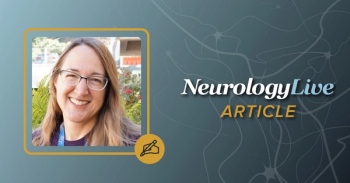This week Neurology News Network covered the FDA approval of JZP-258 for the treatment of cataplexy or excessive daytime sleepiness, amantadine significantly reducing daily "off" time in patients with Parkinson disease, and the results of the phase 3 THALES trial of ticagrelor.
Welcome to this special edition of Neurology News Network. I’m Marco Meglio. Please excuse our appearance this week as a majority of the US workforce, including the NeurologyLive team, moves to working remote as we come together to help reduce the spread of the novel coronavirus.
Jazz Pharmaceuticals has announced that the FDA has approved JZP-258 (Xywav) oral solution for the treatment of cataplexy or excessive daytime sleepiness in patients 7 years of age or older with narcolepsy. The treatment, marketed as Xywav, becomes the first treatment indicated for both cataplexy and excessive daytime sleepiness in people living with narcolepsy in 15 years. The basis of the approval comes from data showing that the drug demonstrated statistically significant differences in the weekly number of cataplexy attacks and Epworth Sleepiness Scale scores compared to placebo in a phase 3 double-blind, placebo-controlled, randomized-withdrawal, multicenter study. Designated as a Schedule III medicine, JZP-258 also contains a boxed warning as a central nervous system depressant and for its potential for abuse and misuse. Therefore, the treatment is only available through a restricted program under a Risk Evaluation and Mitigation Strategy called the Xywav and Xyrem REMS Program.
Data from a post-hoc analysis of 2 pooled phase 3 trials submitted for the 2020 American Academy of Neurology (AAN) Annual Meeting revealed that treatment with amantadine extended-release capsules significantly reduced daily “off” time and time spent in Parkinson disease disruptive motor states in those with PD. Among the 198 patients enrolled in the trial, 101 (51%) of those composing the “off” subgroup had dyskinesia and ≥2.5 hours of daily “off” time. At baseline, the mean “off” time was 4.4 hours and “on” time with troublesome dyskinesia was 4.6 hours. At week 12, placebo-adjusted change in “off” time was a reduction of 1.2 hours and troublesome dyskinesia was reduced by 2.0 hours. Researchers noted that the improvement in good “on” time was due to a reduction in the number of hours spent in “off” as well as the hours spent “on” with troublesome dyskinesia. Patient-rated motor symptom impact on activities of daily living were significantly improved compared to placebo as shown by a —3.2 change on the Movement Disorder Society-Unified Parkinson’s Disease Rating Scale.
Results from the phase 3 THALES trial demonstrated that treatment with ticagrelor lowers the risk of the composite of stroke or death among patients with a mild-to-moderate acute noncardioembolic ischemic stroke or transient ischemic attack who were not undergoing intravenous or endovascular thrombosis. Patients who were administered 90-mg ticagrelor twice daily with aspirin saw a reduction in the rate of the primary composite end point of stroke and death by 17% compared to aspirin alone. The primary outcome, a compositive of stroke or death within 30 days, occurred in 5.5% of patients in the ticagrelor-aspirin group and in 6.6% of patients in the aspirin group. Ischemic stroke occurred in 276 patients in the ticagrelor-aspirin group and in 345 patients in the aspirin group.
For more direct access to expert insight, head to NeurologyLive.com. This has been Neurology News Network. Thanks for watching.



























